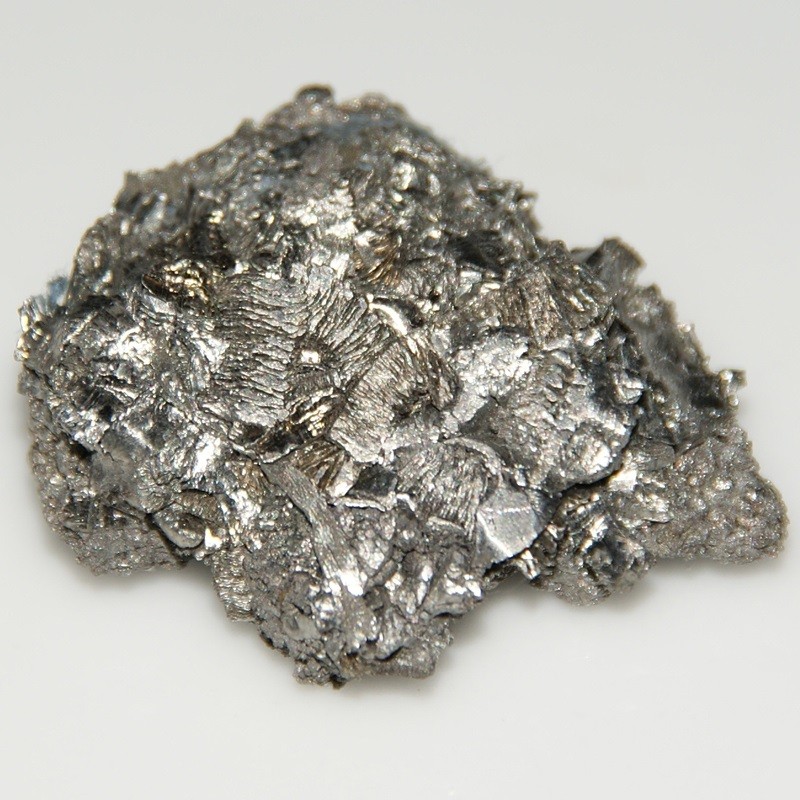Hafnium
72
Hf
Group
4
Period
6
Block
d
Protons
Electrons
Neutrons
72
72
106
General Properties
Atomic Number
72
Atomic Weight
178.49
Mass Number
178
Category
Transition metals
Color
Gray
Radioactive
No
From Hafinia, the Latin name for Copenhagen
Crystal Structure
Simple Hexagonal
History
In 1911, Georges Urbain claimed to have found the element in rare-earth residues which was shown later to be a mixture of already discovered lanthanides.
Dirk Coster and George de Hevesy found it by X-ray spectroscopic analysis in Norwegian zircon in 1922.
Anton Eduard van Arkel and Jan Hendrik de Boer were the first to prepare metallic hafnium by passing hafnium tetra-iodide vapor over a heated tungsten filament in 1924.
Dirk Coster and George de Hevesy found it by X-ray spectroscopic analysis in Norwegian zircon in 1922.
Anton Eduard van Arkel and Jan Hendrik de Boer were the first to prepare metallic hafnium by passing hafnium tetra-iodide vapor over a heated tungsten filament in 1924.
Electrons per shell
2, 8, 18, 32, 10, 2
Electron Configuration
[Xe] 4f14 5d2 6s2
In powdered form, hafnium is pyrophoric and can ignite spontaneously in air
Physical Properties
Phase
Solid
Density
13.31 g/cm3
Melting Point
2506.15 K | 2233 °C | 4051.4 °F
Boiling Point
4876.15 K | 4603 °C | 8317.4 °F
Heat of Fusion
25.5 kJ/mol
Heat of Vaporization
630 kJ/mol
Specific Heat Capacity
0.144 J/g·K
Abundance in Earth's crust
0.00033%
Abundance in Universe
7×10-8%

CAS Number
7440-58-6
PubChem CID Number
23986
Atomic Properties
Atomic Radius
159 pm
Covalent Radius
175 pm
Electronegativity
1.3 (Pauling scale)
Ionization Potential
6.8251 eV
Atomic Volume
13.6 cm3/mol
Thermal Conductivity
0.23 W/cm·K
Oxidation States
2, 3, 4
Applications
Hafnium oxide-based compounds are being introduced into silicon-based chips to produce smaller, more energy efficient and performance packed processors.
Most of the hafnium produced is used in the production of control rods for nuclear reactors.
Hafnium is also used in photographic flash bulbs, light bulb filaments, and in electronic equipment as cathodes and capacitors.
Most of the hafnium produced is used in the production of control rods for nuclear reactors.
Hafnium is also used in photographic flash bulbs, light bulb filaments, and in electronic equipment as cathodes and capacitors.
Hafnium is considered to be non-toxic
Isotopes
Stable Isotopes
176Hf, 177Hf, 178Hf, 179Hf, 180HfUnstable Isotopes
153Hf, 154Hf, 155Hf, 156Hf, 157Hf, 158Hf, 159Hf, 160Hf, 161Hf, 162Hf, 163Hf, 164Hf, 165Hf, 166Hf, 167Hf, 168Hf, 169Hf, 170Hf, 171Hf, 172Hf, 173Hf, 174Hf, 175Hf, 181Hf, 182Hf, 183Hf, 184Hf, 185Hf, 186Hf, 187Hf, 188Hf